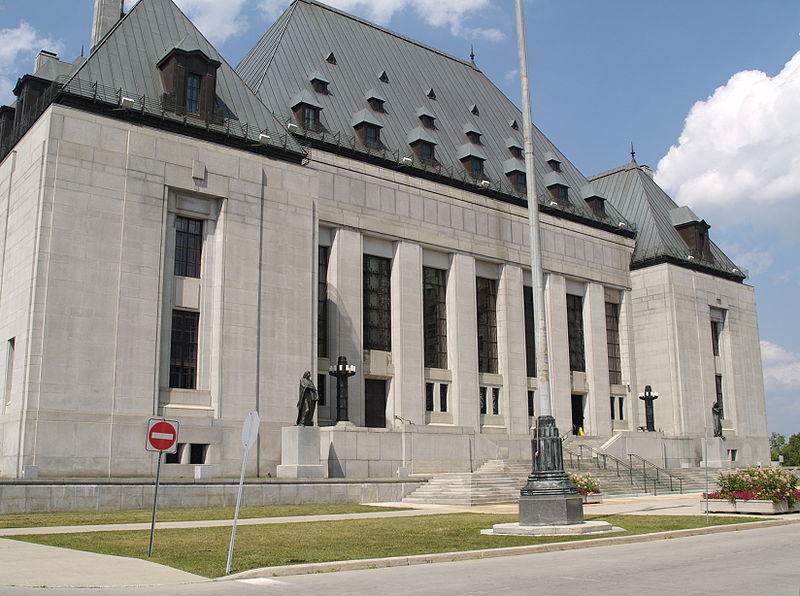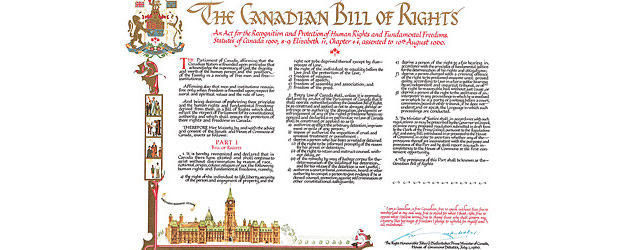The federal government called a Special Joint Committee (of the House of Commons and the Senate) on the Constitution to consult Canadians regarding the proposed Charter. It was supposed to last a few weeks. In the end, it took almost a year to finish: hundreds of people submitted letters or came to Ottawa to present briefs. Whereas six organizations had made presentations to Parliament on the Human Rights Act in 1977, ninety organizations came to Ottawa in 1980. In total, 323 organizations and 639 individuals made submissions. At no other time in Canadian history had the state engaged in such an widespread consultation with Canadians about human rights.
In the 1940s, discrimination on the basis of race and religion dominated public debates surrounding a bill of rights. Social movement organizations pointed to instances where Blacks, Japanese, Jews, and other minorities had been denied services or employment. Organizations such as the National Black Coalition were still part of the conversation in 1980, and insisted during the hearings surrounding the Charter that affirmative action was necessary to “redress historical disadvantages.” However, in 1980, far more ethnic organizations were engaged in these debates. The Baltic Federation of Canada, Canadian Polish Congress, and Canadian Slovak League, for example, challenged the idea of “founding races.” Language rights, they insisted, had to include people whose mother tongue was neither English nor French. One of their primary contributions to the dialogue was to frame the retention of culture and identity as a human right.
Debates surrounding religion and a bill of rights in the 1940s had focused primarily around eliminating the overt repression of religious minorities. By 1980 the discussion had expanded to include the right to maintain separate state-funded schools, hospitals, and child care institutions. Key players in the 1940s had included organized labour and business. Again, by 1980, the debate had shifted. The British Columbia Federation of Labour suggested that the Charter should recognize all forms of workplace discrimination, including disability and political belief. Meanwhile, organizations representing business raised a host of new issues in terms of human rights: free markets and trade; the mobility of persons to pursue a livelihood; the mobility of capital and professional accreditation; property; and the free circulation of goods and services.
When representatives from the country’s leading women’s rights organization, the National Action Committee on the Status of Women, sat down before the committee to present their brief, Senator Harry Hayes (the co-chairman) could not resist saying “Well, it is all fine and good for you girls to be here, but who is looking after the kids?” But Hayes was a relic of an older generation, and women’s organizations used the hearings to forward a more robust definition of human rights. The Canadian Committee for Learning Opportunities for Women framed economic independence, meaningful work, and equal participation in public life as human rights. Other organizations framed learning and training; the right to an annual income; the right to parental leave; and the right to free and quality child/ day care (especially for single mothers) as human rights. Children were also represented by organizations such as a the Canadian Council on Children and Youth and the Canadian Council for Exceptional Children, which defined child care and education for children with disabilities as human rights. Whether or not abortion was a human right was an especially divisive issue throughout the hearings. It pitted women’s rights organizations, including the Canadian Abortion Rights Action League, against pro-life associations and the Canadian Conference of Catholic Bishops.
Sexual minorities and people with disabilities had been absent during the hearings in the 1940s, but they were prominent in the Charter debates. The Canadian Council on Social Development wanted to prohibit discrimination against “handicapping conditions,” socio-economic status, marital status, sexual orientation, and political belief. It also favoured a human right to employment, protection against unemployment, healthy working conditions, an adequate standard of living, health care, education, social insurance, and privacy. The United Church petitioned for the rights of refugees, immigrants, and inmates as well as for minimum standards for housing, nutrition, and income. The National Anti-Poverty Organization lobbied for socio-economic and labour rights, including the right to rest and leisure, paid holidays, and mobility rights for welfare recipients. For gay and lesbian organizations, the hearings provided the first major national forum to advance new rights claims since they had begun to organize in large numbers in the 1970s. The Canadian Association of Lesbians and Gay Men sought the same basic right against discrimination that had already been accorded to women and people with disabilities as well as to visible, ethnic, and religious minorities. Meanwhile, the Canadian Council of the Blind and the Canadian National Institute for the Blind highlighted discrimination against people with visual impairments in employment. Both groups also pointed to a host of other practices: blind people were banned from sitting on juries, confronted with harsh immigration policies, and denied the minimum wage. They also noted the prohibitions on marriage for the people with mental disabilities. Other organizations pointed out that people with auditory impairments were routinely denied goods and services as well as access to facilities, accommodations, and employment.



